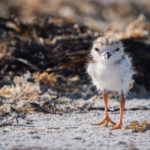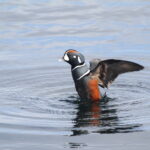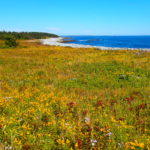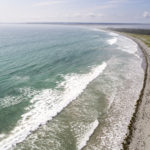A cherished sanctuary for people and wildlife
The 150 acre Black Point Beach property was formally protected in 2013 through a visionary conservation easement with Acadia University. The easement means that the conservation values of the property will be cared for forever, and that research and other low environmental impact activities at the site can continue.
The property is adjacent to the Matthews Lake Property, and together they form the Hemeons Head Conservation Lands. This 316 acre protected area hosts an extensive array of coastal ecosystems, including 3km of uninterrupted sand and cobble beach (Black Point Beach), sand dunes, a rocky coastal headland, tidal marshes, sandflats and mudflats, an extensive lagoon, freshwater wetland, bogs, coastal barrens and coastal forest.
The area is of international significance for migratory birds, and is located within the South Shore (Port Joli sector) Important Bird Area. This property encompasses critical habitat for the species at risk Piping Plover, and Harlequin Duck. It is also a crucial site for many shorebirds during fall migration. A fantastic bird list is available for visitors to this property. We encourage you to record your bird observations from the Conservation Lands in eBird, and share the checklist with the Nature Trust!
The beach at Hemeons Head occasionally hosts nesting Piping Plovers, including a famous plover named “Hemeon.” One of the documented threats to Piping Plovers nesting on Nova Scotia beaches is off-leash dogs scaring them off their nest. To protect these special birds, especially in their breeding season (May to August), please keep your dogs on their leashes, walk on the wet portion of the sand beach, and obey any Piping Plover signage.





